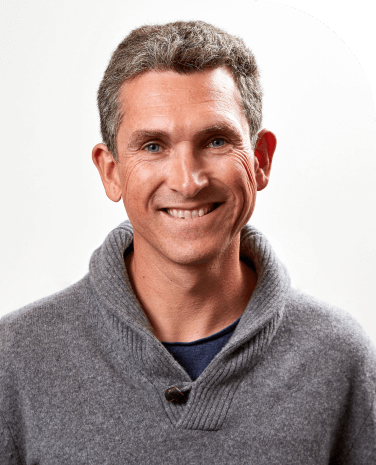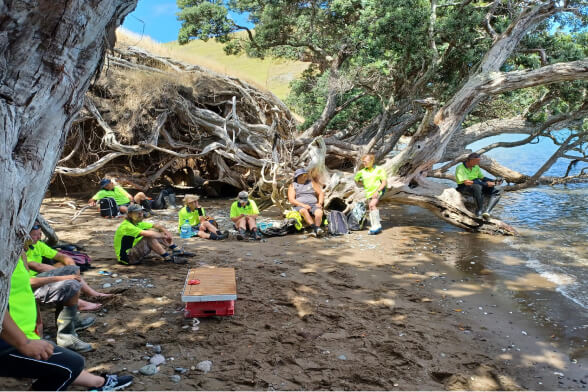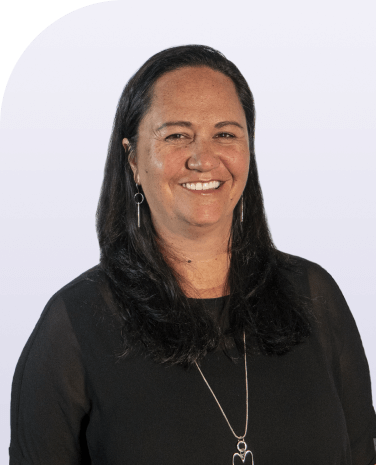
Wild weather taking a toll
Climate change will be one of the greatest challenges of our time. Never more than this year have we seen the affects that warming climate has on our environment and our operations.
Earlier this year we acknowledged the people of Tonga and their families during the eruption of Hunga Tonga–Hunga Ha'apai and subsequent tsunami.
Nestled in Whangaroa Harbour is Moana New Zealand’s largest oyster farm. On the morning of 15 January, the harbour experienced tsunami surges following the eruption. Unfortunately, the farm sustained damages and lines came loose. In the early hours of Sunday morning our farm crew were out on the water assessing damage and ensuring the safety of other harbour users.
We acknowledge the local community for their support during this time and the crew were very grateful for the home baking delivered during the clean-up.
Extensive flooding in August this year saw flooding across the motu which closed our harbours for extended periods of time.
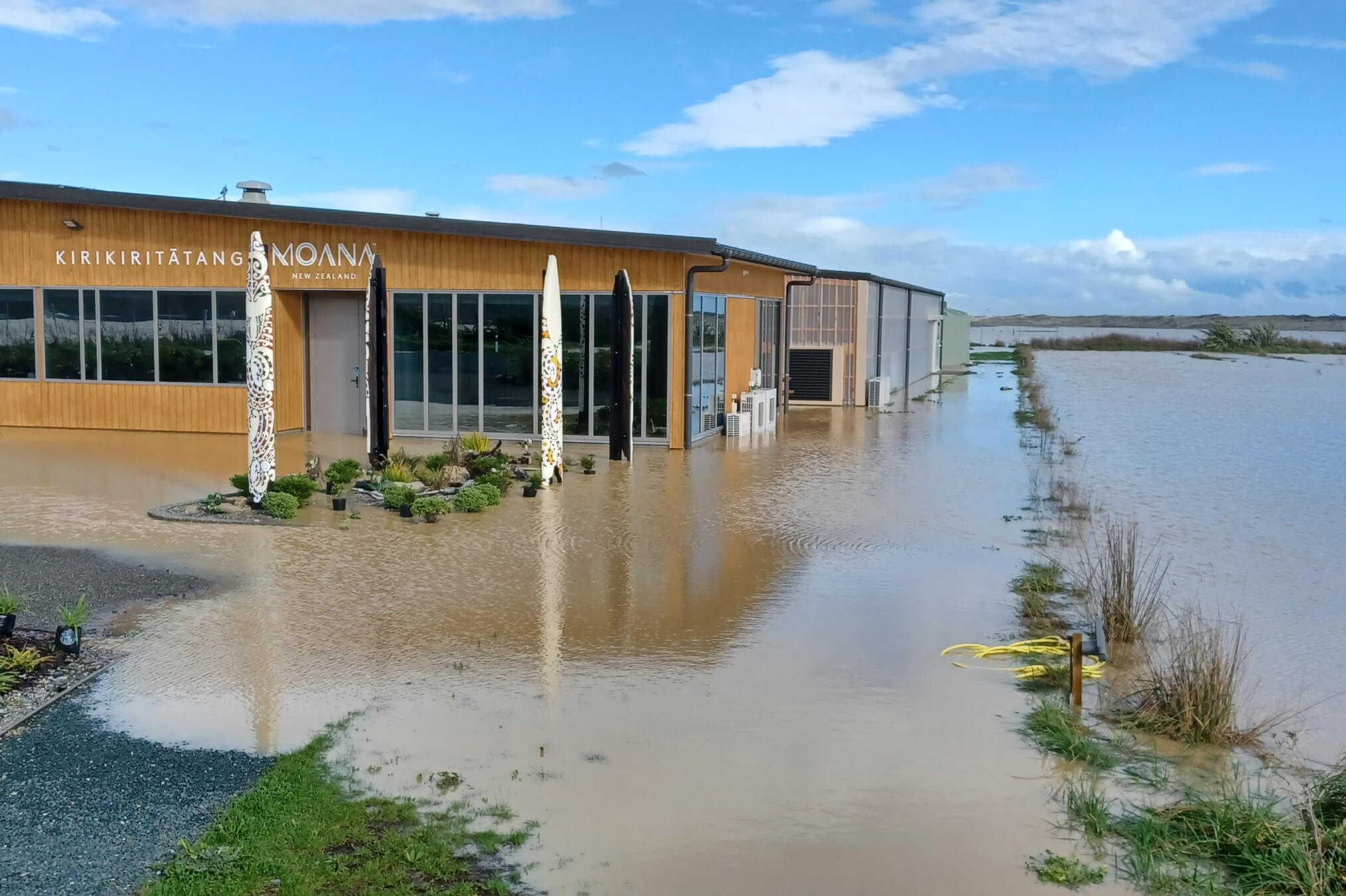
The Nelson/Tasman region was plunged into a state of emergency causing significant flooding throughout the region. Our new hatchery and nursery facilities in Nelson didn’t escape the flooding. Power was out with the transformer being half submerged in water, water had entered the building flooding the offices, cafeteria, meeting rooms and workshop. Roads were closed adding another element of challenge to get diesel in to run the generator.
Fortunately, we managed to get away with only a bit of water damage through the carpets which was largely taken care of through a thorough cleaning.
Through all events, we have been extremely proud of the way our people have stepped up and worked hard to rectify any damages and overcome these challenges, setting us up for a successful 2023.
Sealord’s Seamounts Count campaign improves understanding about bottom trawling
He waka eke noa
— A waka we are all in with no exception
Sealord launched a media and stakeholder engagement campaign in April proposing that 89% of known seamounts in New Zealand’s Exclusive Economic Zone (EEZ) be placed into conservation. The proposal was announced before the start of an industry bottom trawling forum, brought together by the Government to discuss options for seamount fishing.
The plan, which Sealord named “Seamounts Count”, recommends at least 127 of the 142 known seamounts are protected within a conservation envelope.
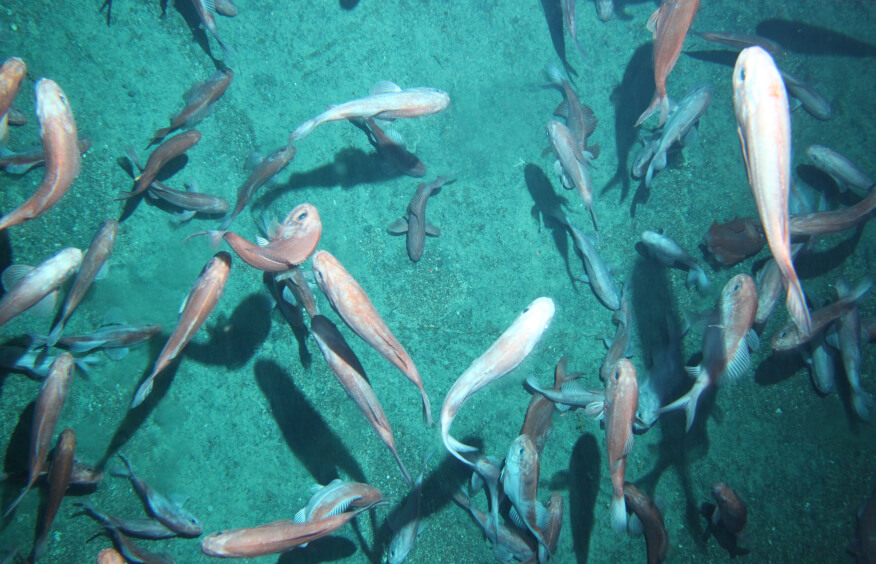
Sealord Chief Executive Doug Paulin described the proposal as a breakthrough in response to a small but concerted campaign by activists to ban fishing on the bountiful pinnacles.
“It is possible to achieve a balance; to conserve the marine environment and continue fishing a very small number of seamounts. We only need to fish 11% of seamounts to support food, jobs and export earnings for New Zealanders,” he says.
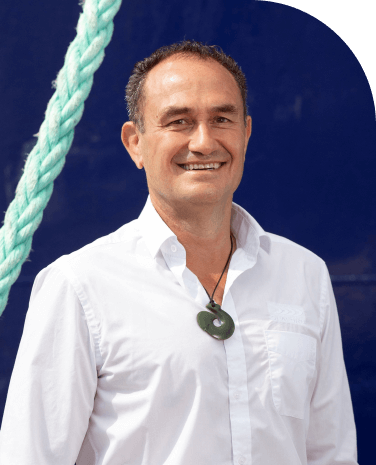
Doug Paulin
Sealord Chief Executive
The seabed of New Zealand’s trawled seamounts was damaged by past fishing activity, but fish still congregate there. Deepwater fishers continue to trawl along historic tracks of these 15 (or 11%) seamounts for quota. That has left at least 127 seamounts untouched – and now potentially untouched for the future.

The campaign was covered in mainstream media and generated a response by the Green Party, Greenpeace and Deepsea Conservation Coalition.
In addition, Sealord commissioned an independent, nationally representative poll by Curia Research which found that 61% of New Zealanders support Sealord’s proposal.
The poll found that only 8% of New Zealanders want fishing on seamounts banned, while 67% are comfortable with fishing on 25% or more of New Zealand’s seamounts and 25% were unsure.
Sealord asked Kiwis what they thought about fishing on seamounts.
Interviewee responses:
“I eat fish all the time, I had snapper for dinner last night and I might have terakihi tonight”
“I would say it’s one of the biggest meals we have as a family”
“I’ve actually stopped eating fish”
“I’d like to eat it a lot more but once or twice a week”
“We don’t eat it that much”
“I eat fish all the time”
There is a challenge. Undersea mountains, or seamounts, are an important ecological habitat,
and some of our best fishing spots. Kiwis care about sustainability.
Interviewee responses:
“It’s a responsibility for us to care for those that are part of this world with us and that
includes the fisheries and also we love a good feed of kaimoana”
“It’s just putting the environment first and thinking about longevity”
“It’s important to teach the kids what is sustainable and the choices that we have that impact our
future”
“It’s our people that are consuming it so it would be good to know that what they’re eating is
coming from a healthy environment”
To provide enough deep-sea fish we only need to fish 11% of seamounts, so Sealord has proposed
that 89% are closed to fishing.
Interviewee responses:
“Yeah, I’d totally support that. That would be amazing. The 10% that they would need to replenish.
I don’t think it will happen, but they should”
“I don’t know how much fish that 11% has. Is it enough for the public to eat fish or whoever to
eat fish?”
“I think that’s really cool. They have awareness about what’s going on in the ocean. If I was
cooking for my family, I would feel better about using fish instead of buying another meat
product”
“I’m kind of surprised to hear that. I thought it was kind of sketchy with everyone just fishing
where they want and stuff”
“I’d just like to see a lot of it protected”
“Obviously we need to protect the industry as well, but I think by doing that we’ll protect it for
longer”
Seamounts count. Sealord proposes we fish them sustainably to protect marine life.
Interviewee responses:
“It’s about finding that balance. The balance of feeding the family, feeding the kids, we need to
make sure that my grandchildren and great grandchildren, great great grandchildren can still do
things that our ancestors loved doing”
“Sealord are really quite with it I think. They’re pretty advanced I think in their thinking for
the future as a sustainable resource”
Doug Paulin said the survey shows Kiwis back a balance between conservation and fishing. “We know sustainable fishing is important to Kiwis. It is great to see their support for this proposal,” he says.
This short video shows some people’s views about seamount fishing.
Catchment review in Whangaroa Harbour
This study set out to understand the current state of the catchment, what stressors impact the harbour’s health and wellbeing and to develop a response plan to inform actions that Moana and others may take to improve the harbour’s health.
The report uses the Nature’s Contributions to People framework which has developed the earlier ecosystem-services review methodology. This is the first time that nature contributions to people framework has been applied to the marine environment in New Zealand and we acknowledge the work of Katherine Short – Terra Moana, Eva Siwicka and Simon Thrush – Auckland University in compiling the report.
Some of the key findings of the report are:
Whangaroa Harbour contributes to many aspects of people’s wellbeing
The review of Whangaroa harbour highlights the wide range of benefits that people can enjoy, emphasising the need for safeguarding the harbour’s health and improving management.
Oysters are an integral part of Whangaroa Harbour
Oyster farms regulate harbour health and are also important to social and economic wellbeing. The contributions oysters make whether farmed or living around the harbour can be both positive and negative. Oyster farms depend on good harbour water quality.
Significant habitats modification
The Whangaroa catchment has been heavily modified by human activities. The most significant impacts were caused by deforestation, mangrove reclamation, agriculture, aquaculture, road construction and faecal contamination. These activities contributed to increased sedimentation and reduced water quality in the harbour. Seafloor habitats within the harbour also have been modified and currently there is no quantitative record of these changes.
Inconsistent monitoring data
Data from monitoring is sporadic and there is a lack of consistent methodology. Environmental studies have been done, although with variable methods and at different places, limiting our ability to make detailed comparisons over time. The findings clearly show that consistent monitoring, using consistent methodology over time is needed to better inform environmental management by interested parties.
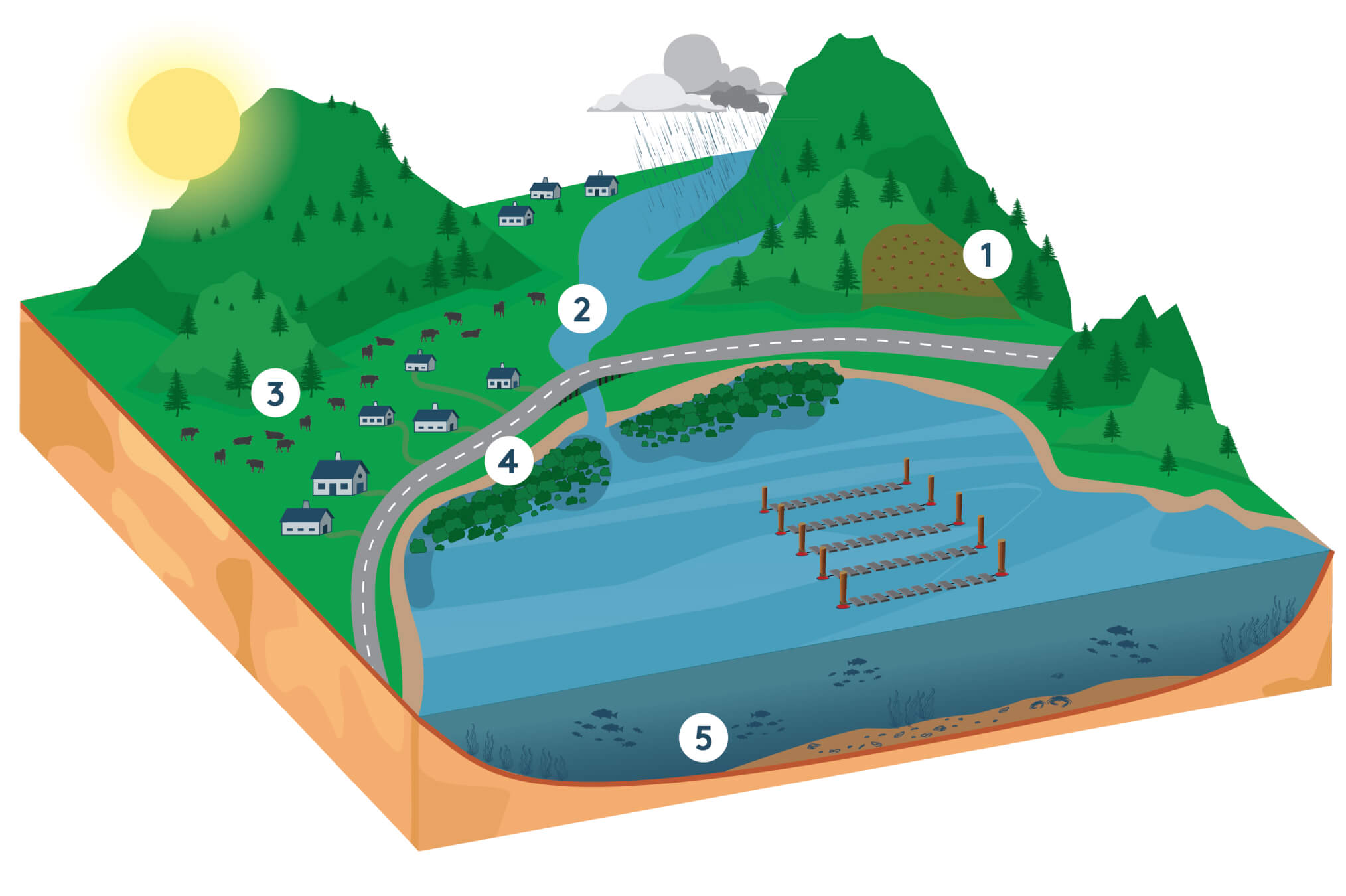
To address some of these findings, Moana New Zealand is pleased to have begun the Tio Transformation project and have also put in place a three-year monitoring programme which can be read about below.
See the full report on our websiteEnvironmental monitoring for farm conversions
As part of our Tio Transformation project, in 2021 we commissioned eCoast to design and implement a multi-year monitoring program to measure and record environmental changes occurring from converting from the traditional intertidal timber racks to the semi-automated floating long-line system for oyster growing.
The historical dense intertidal timber racks effectively reduce and redirect tidal currents and reduce the penetration of wind-generated wave activity. This results in reduced water flow through the farm and lessens influence of wind-generated waves on the seabed. As a consequence, fine sediments (land and farm-derived) are trapped under the farms and ultimately change the seabed quality (thickness of sediment layer, chemistry, biological communities, etc.). By converting to the semi-automated system, it is expected that positive changes to the sediment under the farms will occur due to increased resuspension of sediments (which occurs along the water’s edge as the tide moves up and down during wind events) and increased currents and flushing.
At each harbour, the monitoring design is slightly different due to the farm layouts, although all monitoring methodology follows a BACI (Before/After, Control/Impact) monitoring design in order to confidently measure the effects that the conversion to the semi-automated system has on the marine environment. The monitoring includes waves and currents, marine ecology and sediment chemistry/composition.
To date, three surveys have been undertaken at Whangaroa and Parengarenga Harbours (baseline and 2x 6-monthly monitoring), and two surveys at Coromandel Harbour (baseline and one 6-monthly monitoring). Findings to date are:
- Baseline wave and current data measurements verify that the dense racks reduce wave heights, and reduce and redirect currents within the farms
- The control sites (i.e., outside of the farms) have statistically different community structure and sediment chemistry, allowing for useful comparison of conversion to semi-automated farming
- Fine sediments and nutrients have reduced, and biodiversity has also increased in some of the impact sites in farms where the rack systems have been removed, which is likely associated with the increased exposure to currents, waves and light; a notable and surprisingly fast change is the appearance of seagrass within the Parengarenga Harbour farms where racks have been removed
- High rainfall events can be attributed to some of the changes in species composition and sediment chemistry across all sites
- The monitoring design is sufficiently robust to measure changes in community composition and sediment chemistry

Taking care of the areas where we operate
We are committed to looking after the areas in which we operate. As part of this commitment Moana voluntarily participates in co-ordinated clean ups. It’s a great way for our people to bond over a common cause and get involved in their local communities.
